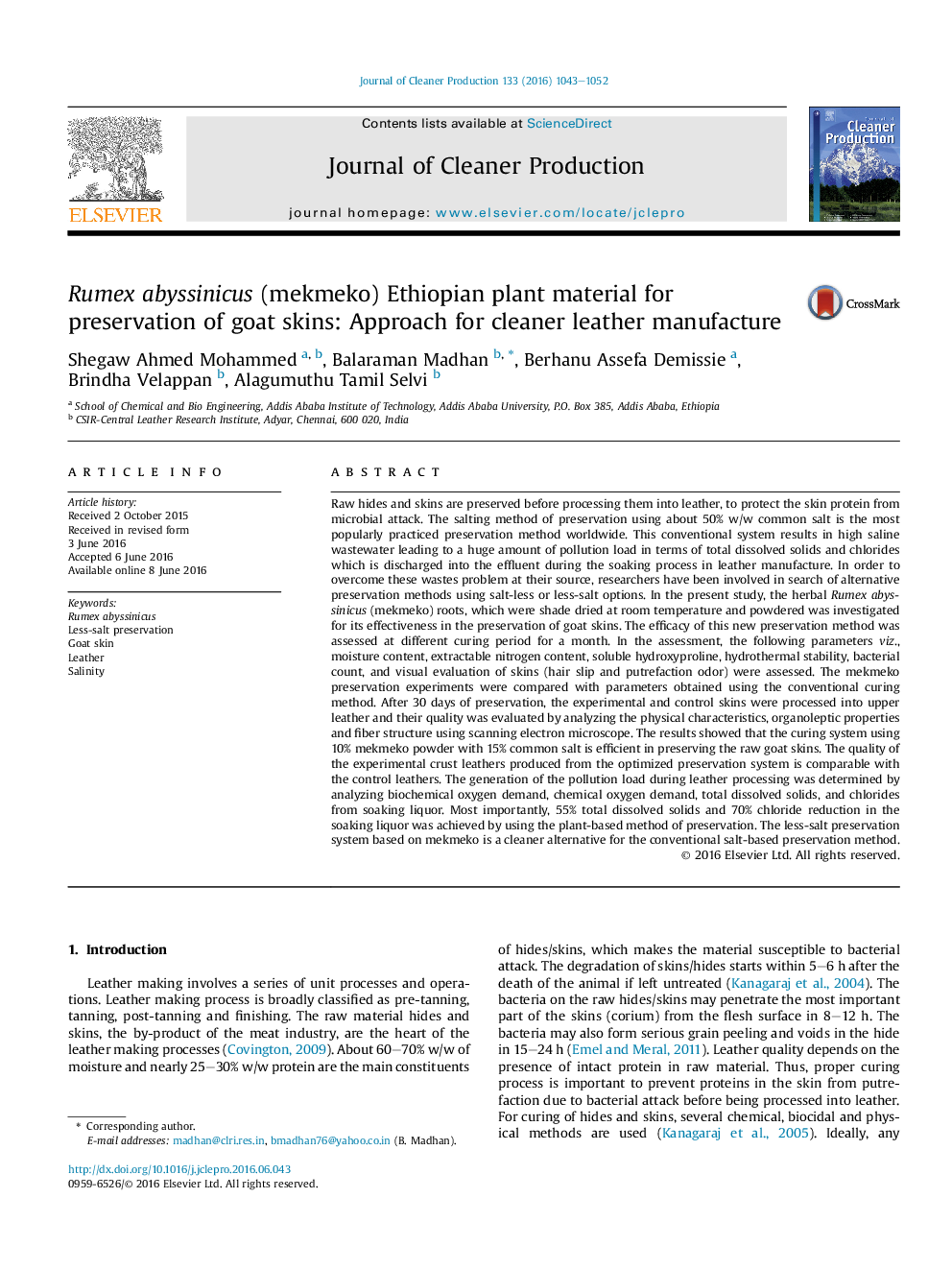| کد مقاله | کد نشریه | سال انتشار | مقاله انگلیسی | نسخه تمام متن |
|---|---|---|---|---|
| 8101866 | 1522116 | 2016 | 10 صفحه PDF | دانلود رایگان |
عنوان انگلیسی مقاله ISI
Rumex abyssinicus (mekmeko) Ethiopian plant material for preservation of goat skins: Approach for cleaner leather manufacture
دانلود مقاله + سفارش ترجمه
دانلود مقاله ISI انگلیسی
رایگان برای ایرانیان
موضوعات مرتبط
مهندسی و علوم پایه
مهندسی انرژی
انرژی های تجدید پذیر، توسعه پایدار و محیط زیست
پیش نمایش صفحه اول مقاله

چکیده انگلیسی
Raw hides and skins are preserved before processing them into leather, to protect the skin protein from microbial attack. The salting method of preservation using about 50% w/w common salt is the most popularly practiced preservation method worldwide. This conventional system results in high saline wastewater leading to a huge amount of pollution load in terms of total dissolved solids and chlorides which is discharged into the effluent during the soaking process in leather manufacture. In order to overcome these wastes problem at their source, researchers have been involved in search of alternative preservation methods using salt-less or less-salt options. In the present study, the herbal Rumex abyssinicus (mekmeko) roots, which were shade dried at room temperature and powdered was investigated for its effectiveness in the preservation of goat skins. The efficacy of this new preservation method was assessed at different curing period for a month. In the assessment, the following parameters viz., moisture content, extractable nitrogen content, soluble hydroxyproline, hydrothermal stability, bacterial count, and visual evaluation of skins (hair slip and putrefaction odor) were assessed. The mekmeko preservation experiments were compared with parameters obtained using the conventional curing method. After 30 days of preservation, the experimental and control skins were processed into upper leather and their quality was evaluated by analyzing the physical characteristics, organoleptic properties and fiber structure using scanning electron microscope. The results showed that the curing system using 10% mekmeko powder with 15% common salt is efficient in preserving the raw goat skins. The quality of the experimental crust leathers produced from the optimized preservation system is comparable with the control leathers. The generation of the pollution load during leather processing was determined by analyzing biochemical oxygen demand, chemical oxygen demand, total dissolved solids, and chlorides from soaking liquor. Most importantly, 55% total dissolved solids and 70% chloride reduction in the soaking liquor was achieved by using the plant-based method of preservation. The less-salt preservation system based on mekmeko is a cleaner alternative for the conventional salt-based preservation method.
ناشر
Database: Elsevier - ScienceDirect (ساینس دایرکت)
Journal: Journal of Cleaner Production - Volume 133, 1 October 2016, Pages 1043-1052
Journal: Journal of Cleaner Production - Volume 133, 1 October 2016, Pages 1043-1052
نویسندگان
Shegaw Ahmed Mohammed, Balaraman Madhan, Berhanu Assefa Demissie, Brindha Velappan, Alagumuthu Tamil Selvi,